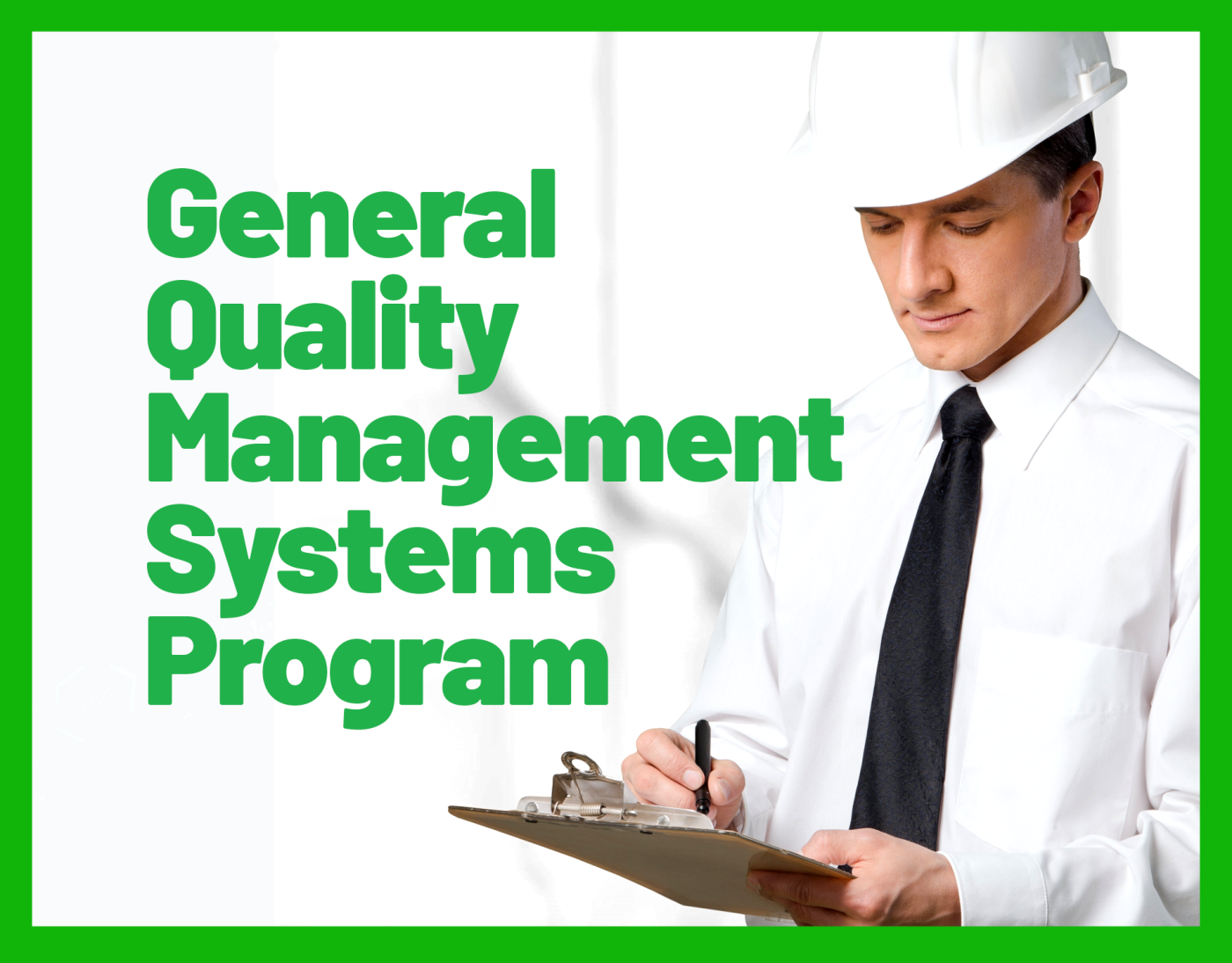General Quality Management Systems Program
This 10-week training program provides a comprehensive overview of the fundamental principles of quality management systems – whatever the industry or quality standard.


Quicklinks
Course overview
There are 10 modules in this program, with a new module delivered each week.
- Risk Management*
- Quality System Documentation
- Organisational Structure & Training
- Data Integrity
- Audits, Auditors & Auditing
- Nonconformities, CAPAs & Improvement
- Facilities & Equipment
- Computerised Systems & IT Infrastructure
- Archiving, Business Continuity & Disaster Recovery
- Additional QMS Considerations
The program is designed to build on the knowledge and skills of the previous week’s learning.
Each module is covered in a 2.5-hour training session from 12.00 pm – 2.30 pm (AEST / AEDT as applicable).
*Week 1 includes the program introduction and is 3-hours long i.e. from 12.00 pm – 3.00 pm AEST / AEDT.
There is an online pre-program questionnaire for enrolled participants.
Who should do this course
This program is ideal for anyone who has an interest in quality management systems – and is particularly valuable for the following people / groups / organisations, from all industries:
- New Employees – who need to understand fundamental quality management system concepts to be set up for success in their new role.
- Existing Staff – who need to stay up to date with current quality expectations to operate effectively within the existing quality management system.
- New Graduates – who would like a competitive advantage at the commencement of their careers, and to translate quality theory from university into quality management practice in the laboratory context.
- Quality Leaders – who are responsible for safeguarding, managing and improving quality in the organisation, and who need to lead others to participate fully in a quality culture.
- Potential Accredited Facilities – organisations considering implementing a quality management system to become accredited.
- Quality-Focused Facilities – organisations wanting to improve their quality, without becoming accredited.
What you will learn
| WEEK 1 Risk Management | The concepts and practices of risk management should be embedded in all aspects of the quality management system (QMS). Taking a risk-based approach to laboratory operations supports the QMS’s role in ensuring conformance and achieving valid results. In this module, we look at how to identify, analyse, evaluate and treat risks and the importance of ongoing risk monitoring. |
| WEEK 2 Quality System Documentation | It is critical that all aspects of the QMS are documented appropriately. This is achieved through the use of Quality System Documentation (QSD) which has many benefits including the promotion of consistency in processes and output, minimisation of potential errors, and avoidance of knowledge loss. In this module, we examine the lifecycle of QSD and determine typical structure and format. |
| WEEK 3 Organisational Structure & Training | Establishing and documenting staff competence is an integral part of the QMS that can help reduce adverse events, increase productivity, improve employee engagement and build competitive advantage. In this module, we start with a broad lens to look at organisational structure and then progressively zoom in towards position descriptions, job roles and competencies for specific job roles. |
| WEEK 4 Data Integrity | As the transition from paper-based systems to electronic systems gathers pace, the continuously evolving nature of data integrity has been at the forefront of QMS considerations in recent years. In this module, using the principles of ALCOA+, we reflect on the data lifecycle, and identify risks to data integrity and how they can be mitigated appropriately. |
| WEEK 5 Audits, Auditors & Auditing | A structured approach to determining compliance with applicable standards, both internal and external to an organisation, is an essential component of any QMS. In this module, we take a holistic look at audits, the characteristics required by those conducting them, and the different phases of the audit lifecycle. |
| WEEK 6 Nonconformities, CAPAs & Improvement | A key premise of every QMS is the notion of reactive and proactive continuous improvement. In this module, we explore the handling of issues / problems, and the processes to be followed to ensure they do not reoccur. We also investigate different ways an organisations can identify and implement improvements prior to issues / problems arising. |
| WEEK 7 Facilities & Equipment | This module focuses on the physical environment in which our QMS is applied. It incorporates a high-level review of essential facility considerations, the equipment lifecycle, and an overarching look at equipment utilised within the QMS. Associated concepts such as metrological traceability and measurement uncertainty are also discussed. |
| WEEK 8 Computerised Systems & IT Infrastructure | This module focuses on the electronic environment in which our QMS is applied. Through the concept of the validation lifecycle, we explore the critical steps before and after the release of a computerised system into a ‘production environment’. We also study the evolving expectations of our QMS with regards to more generalised IT infrastructure. |
| WEEK 9 Archiving, Business Continuity & Disaster Recovery | A pivotal aspect of every QMS is the ability to ensure relevant documents, records and materials are safely and securely retained in a manner that facilitates future review. In this module, we investigate how this is achieved in a world that is still transitioning to electronic data. Utilising our understanding of risk management, we also determine how well-structured business continuity and disaster recovery planning can significantly minimise the impact of adverse events. |
| WEEK 10 Additional QMS Considerations | In our final module we ensure we have well-established business continuity and disaster recovery plans. This is a critical aspect of any QMS as it can significantly minimise the impact of adverse events. In this final module, we discuss additional considerations in the contemporary QMS context that include ongoing transition to electronic QMS, the use of QMS metrics to assess success, the emerging impact of AI, and the challenges of administering a QMS. |
Delivery
This training program is delivered virtually using the Zoom platform, with learning resources that are accessed via an online learner portal.
Weekly sessions are designed to maximise learning through the following format:
- The first hour starts with a review of the previous week’s learning using an online multiple-choice quiz to identify any areas that require further discussion or learning. Then, the current week’s module is introduced in an engaging and interactive way.
- The second hour is a workshop where participants apply their new knowledge to a series of entertaining, team-based activities with clearly defined learning objectives. Throughout this process, participants acquire practical tools and materials they can immediately use within their own work environment. Possible answers and examples are provided the day after the module is completed.
- Final 30 minutes, participants are provided with ‘follow-up exercises / practice activities’ to be completed by the following week. These help clarify any learning gaps and apply what has been learned during training in a practical and realistic context.
Although participants are strongly encouraged to attend every session ‘live’, if a participant is unable to attend their designated session, a recording and all associated materials will be made available through the online learning portal.

